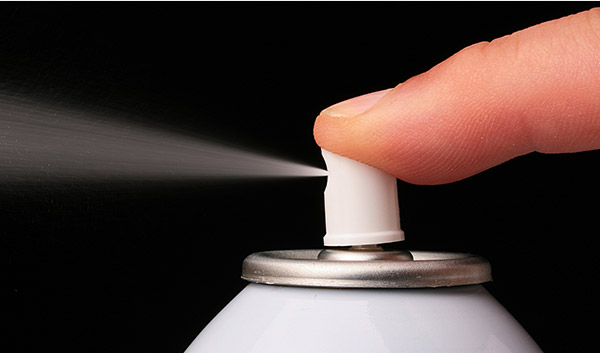 |
||

| ||
How to Prevent Mold Release Over-Spraying & Reduce CostsPeople are imperfect. In manufacturing we try to drive out imperfection, and costs, wherever we can. Employing expensive equipment and regimented QA processes, the goal is to eliminate errors and reach .00001% or better. And that is still not perfect. Take, for example, spraying on mold release. Simple, yet not. People routinely spray too much in an overabundance of caution. The more release the better, right? The problem of overspray Over spraying is inherently bad. First, it obviously costs you since you are using more than you really need. Though it may appear to be pennies, aggressive spraying can cost hundreds, or even thousands of dollars each year in unnecessary purchases of mold release. In addition, heavy spraying transfers to your parts. The goal is to get them to release cleaning to the mold, not carry the mold release with them as they drop or are picked from the mold. Consider removing the fingertip from the aerosol spray An automatic spray unit can remove the imperfection and personal interpretation of what is enough mold release. It is a simple, labor-reducing way to minimize downtime, reduce manufacturing costs, boost productivity and control consumption of processing chemicals. The spray unit works autonomously, doesn’t need a break, and applies the same amount of mold release (or whatever you want to spray) at specific times, so you use only what you need. The most simple and straight forward are self-contained systems needing virtually no maintenance. Coverage is uniform and applied directly to the areas you determine. How does it work? A proximity sensor placed near the mold cavity detects when the mold opens and signals the unit to deliver release agent. The system can be programmed to spray at specific cycle intervals, and you can also program delays to first permit parts to release or robotics to cycle through. Spray duration can be set from a small burst to a long spray. Where can you use it? For plastics processing an obvious use is for mold releases. But other equipment can benefit as well. Conveyors or other processes requiring the application of lubricants or other products can easily be automated. Manufacturers have automatic spray units to be ideal for precise lubrication to specific areas of their production processes. Slide Products offers their own Freedom Automatic Spray Unit designed to utilize Slide’s giant aerosol tanks. The unit can be also be adapted to accommodate bulk products. Easy to install Our compact Freedom system has protective rubber feet so it sits solidly on any flat surface. Or you can mount the unit directly to the machine. Equipped with a 10-foot power cord that plugs directly into any 110V, 15 amp circuit, the system comes standard with an easy-to-program control unit, two 10-foot spray hoses with nozzles attached, 2 additional spray nozzles with an alternate spray pattern, proximity sensor with 6-foot cord, and a 5-foot tank hose. Learn more about mold releases, cleaners and rust preventives |
||